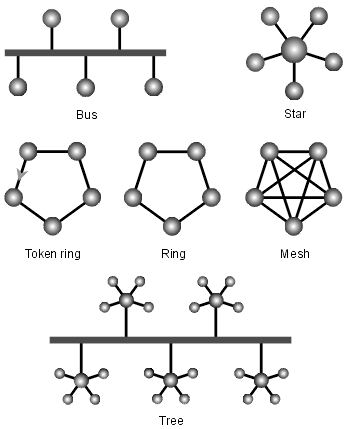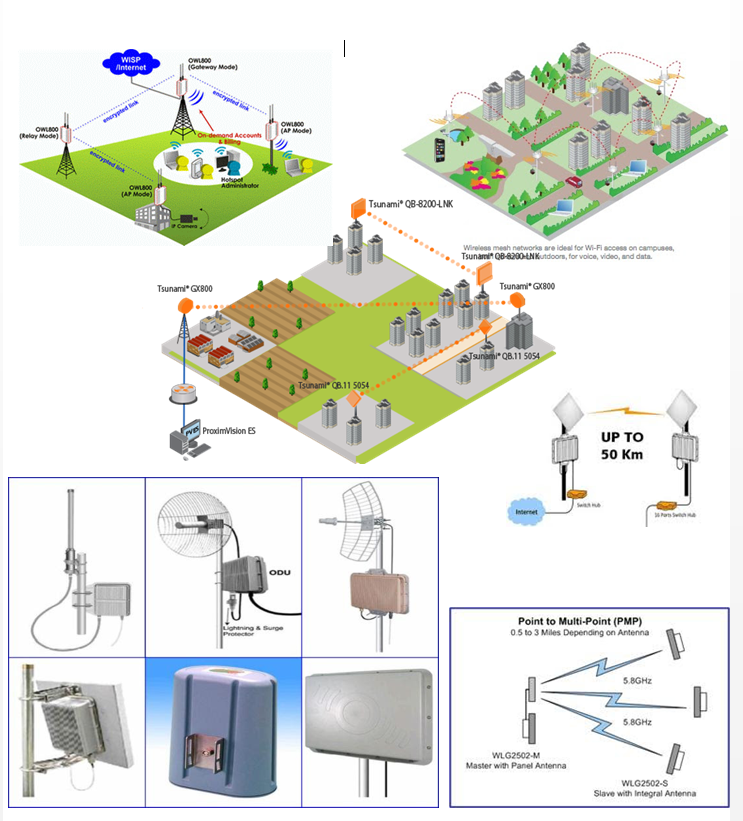Wired and wireless networks
- Wired Networks
- Wireless Networks
- Topology
- Cabling and Termination
- Maintenance
What is wired network
A wired network is a common type of wired configuration. Most wired networks use Ethernet cables to transfer data between connected PCs. In a small wired network, a single router may be used to connect all the computers. Larger networks often involve multiple routers or switches that connect to each other. One of these devices typically connects to a cable modem, T1 line, or other type of Internet connection that provides Internet access to all devices connected to the network.
Benefits of wired connection
It is easy enough to see why enterprises want to remain wired – control and security, reliability and speed are the primary benefits of using physical connections. It is also relatively cost-effective, as the price of cabling – even at the lengths needed to cover an average office – is pretty cheap. One great advantage of having a wired infrastructure, which seems particularly relevant in today’s mobile world, is the control it provides. If a physical connection is needed to access the corporate network, the business is in full control of who and what gets online. While this has obvious security benefits of keeping unauthorised visitors out of your network, it also means your network will not be overloaded with non-business critical traffic.
What is a Wireless Network
Wireless seems to be a no-brainer choice when it comes to choosing a network for your small business. Wireless access has become so common that many of us find ourselves a bit miffed when we’re “left stranded” without Wi-Fi. But when you’re a small business owner just starting out or thinking about re-configuring your network, the decision to choose wired or wireless networking is far from obvious. Wireless is often the default recommendation of business technology consultants because it’s perceived to be cost effective compared to wiring an entire facility and its workstations. Many small to mid-sized businesses go with a wireless network because it lets them share a single Internet connection while accessing communal files, peripherals and software. Set up a few access points and voila—everything is connected and accessible from outside of your four walls. Employees are more productive and data is stored centrally.
Why choose Wireless Network
Wireless networked offices are tidy and neat environments since cables don’t connect the workstations. Employees’ workspaces aren’t limited to where network wires can reach or already exist. Plus, there’s the liability to consider if an employee or customer trips over the wires. And there is the draw of being able to offer Wi-Fi access to customers as a perk.
Maintenance/ Service for Wired networks
At Perfect Security, we install, maintain and troubleshoot both wireless and wired networks in all types of industries. If you are interested in learning more about our business networking services or need help deciding which is best for your company, just give us a call at (+966) 012261114 or contact us online.
Maintenance/ Service for Wireless networks
At Perfect Security, we install, maintain and troubleshoot both wireless and wired networks in all types of industries. If you are interested in learning more about our business networking services or need help deciding which is best for your company, just give us a call at (+966) 012261114 or contact us online.
What is Cabling
Cable is the medium through which information usually moves from one network device to another. There are several types of cable which are commonly used with LANs. In some cases, a network will utilize only one type of cable, other networks will use a variety of cable types. The type of cable chosen for a network is related to the network's topology, protocol, and size. Understanding the characteristics of different types of cable and how they relate to other aspects of a network is necessary for the development of a successful network.
The following sections discuss the types of cables used in networks and other related topics.
Unshielded Twisted Pair (UTP) Cable
Shielded Twisted Pair (STP) Cable
Coaxial Cable
Fiber Optic Cable
Cable Installation Guides
Wireless LANs
Unshielded Twisted Pair (UTP) Cable
What is UPT cabling
Short for Unshielded Twisted Pair, a UTP cable is a cable used in computer networking that consists of two shielded wires twisted around each other. The image shows various network cables, including UTP.

What is Fiber Optic Cabling
A fiber optic cable consists of a bundle of glass threads, each of which is capable of transmitting messages modulated onto light waves. Fiber optics has several advantages over traditional metal communications lines: Fiber optic cables have a much greater bandwidth than metal cables.

Maintenance/ Service for Cabling networks
At Perfect Security, we install, maintain and troubleshoot both wireless and wired networks in all types of industries. If you are interested in learning more about our business networking services or need help deciding which is best for your company, just give us a call at (+966) 012261114 or contact us online.
What is Topology
What is a network topology? In communication networks, a topology is a usually schematic description of the arrangement of a network, including its nodes and connecting lines. There are two ways of defining network geometry: the physical topology and the logical (or signal) topology.
The physical topology of a network is the actual geometric layout of workstations. There are several common physical topologies, as described below and as shown in the illustration.

What is Outdoor Topology
What is a Outdoor topology?
The physical topology of a network is the actual geometric layout of workstations. There are several common physical topologies, as described below and as shown in the illustration.

What is Indoor topology
What is a Indoor topology?
The physical topology of a network is the actual geometric layout of workstations. There are several common Indoor topologies, few are described below and as shown in the illustration.
